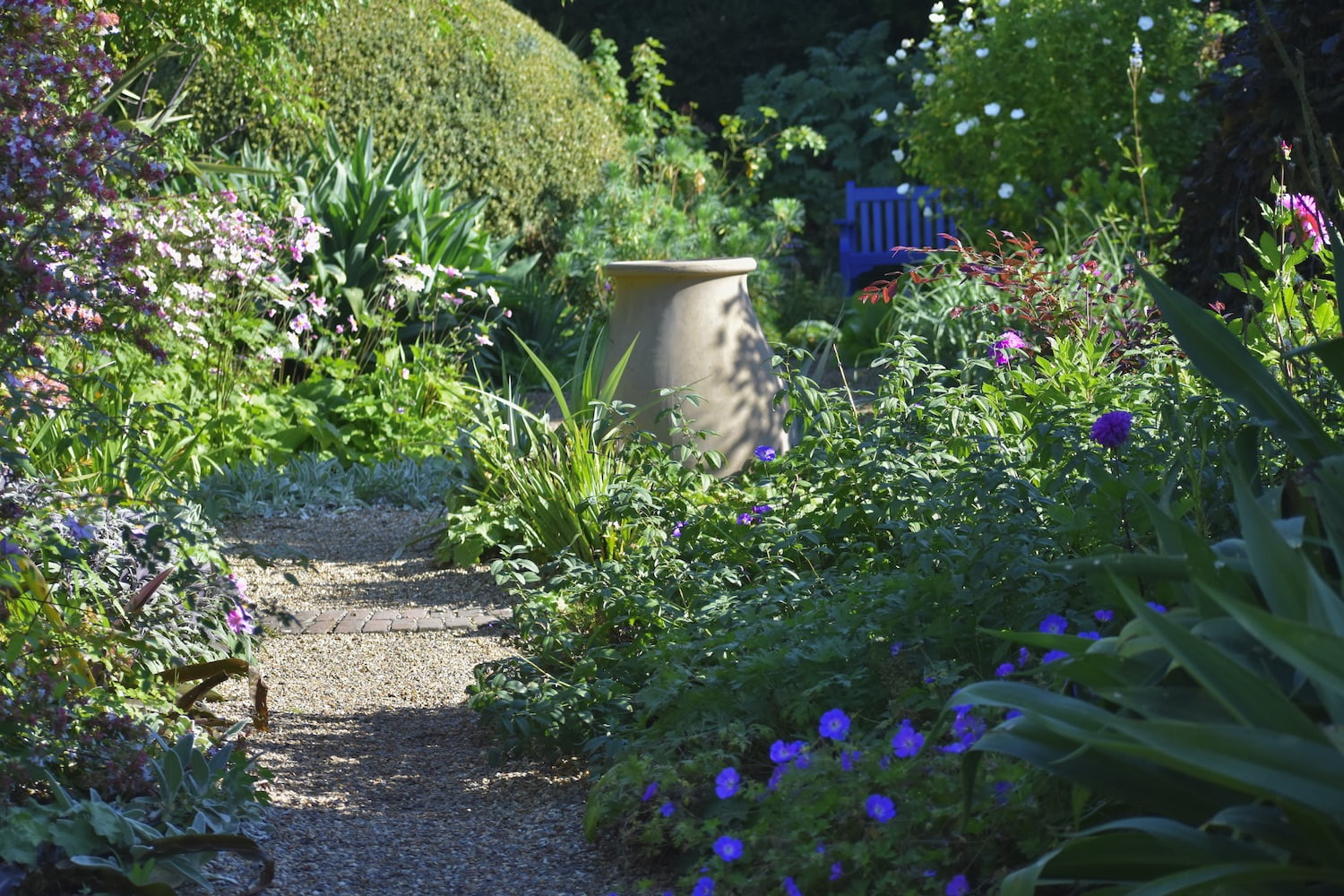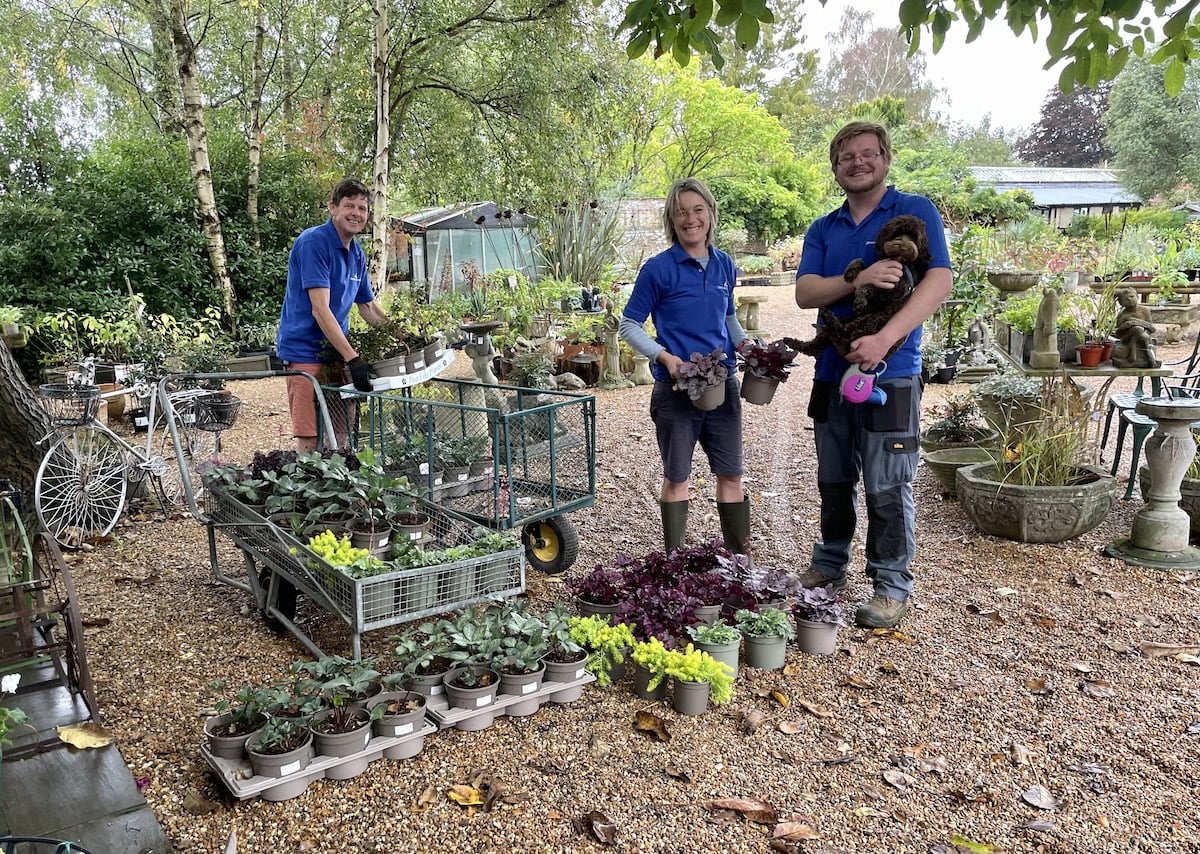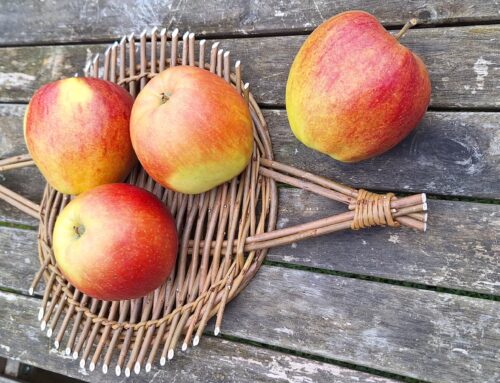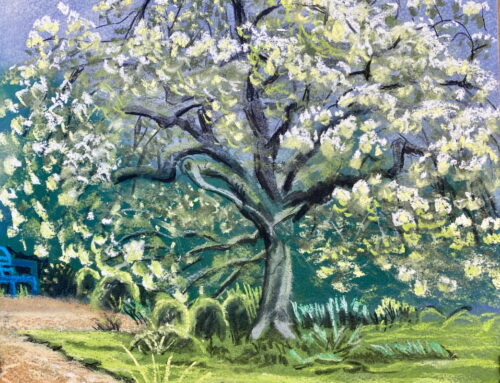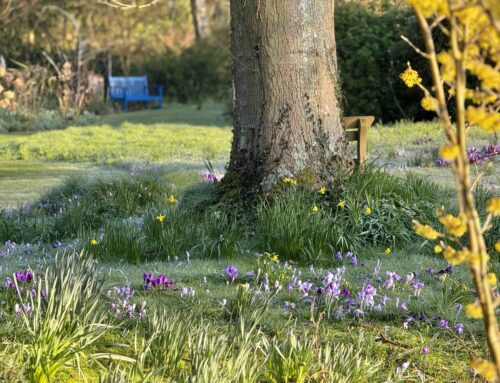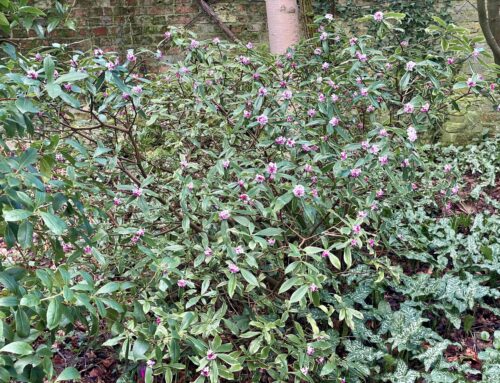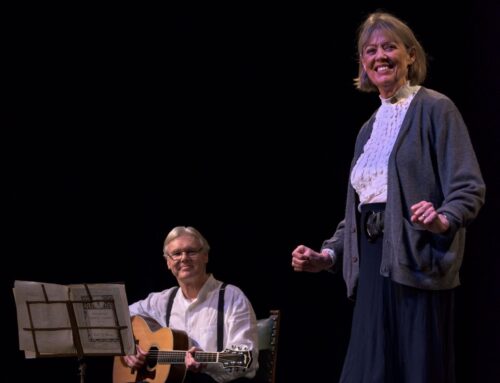March 2024
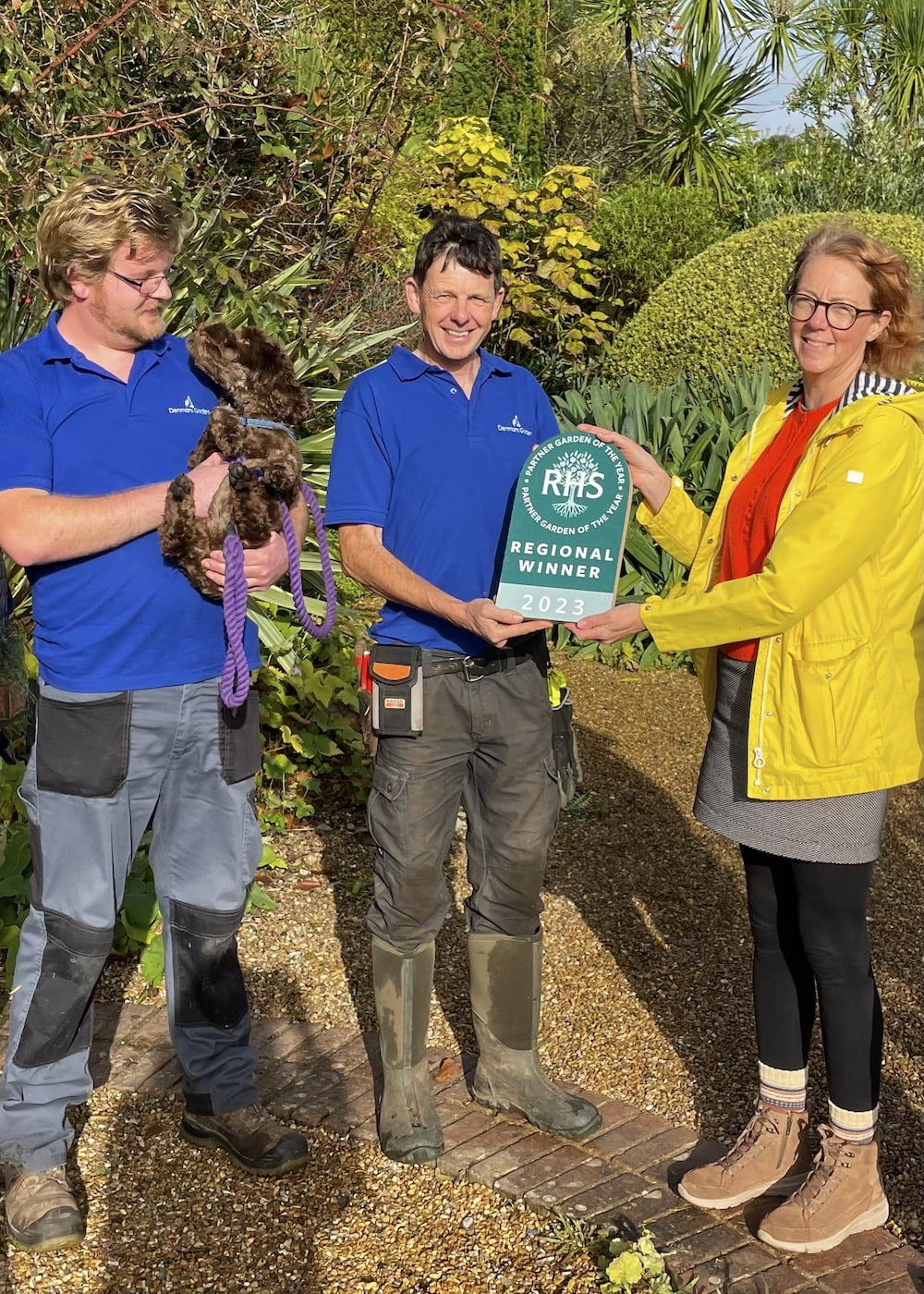
RHS coordinator Emma Allen presents the regional RHS Partner Garden of the Year award to Jonathan Arnold and Cameron Gillespie in November 2023.
As my first year at Denmans has flown by, I can genuinely say what a fantastic place it is to be. It is not just the legacy of the plants and structure left by John Brookes and Joyce Robinson, but the people working in the Garden and visiting today that really make the place come alive. It was no surprise to me that we received the accolade of Regional RHS Partner Garden of the Year for the South East and Channel Island late last year. Just from the visitor feedback I have observed over the past year, the sheer joy that people get from coming here is palpable.
For me, this year has been very much about trying to understand the Garden. I am slowly forming a strategy for how to tackle certain areas so they can move forward in the future. So far, this has been achieved by blitzing areas, taking out plants that do not belong, lifting all the plants in a bed and meticulously splitting them to remove the ground elder properly. It has also been about the careful pruning of shrubs and removing some of the dead wood and crossing branches that immediately helps to open plants that have not been maintained in a long time.
I find Denmans a complex garden to understand from a variety of perspectives, like, from a historical standpoint, figuring out where the influence of John Brookes or Joyce Robinson dominates in different areas of the Garden and also where their ideas have fused.
I think one factor that stands out the most for me is maintaining the character – the quirkiness and the relaxed feeling you get about the place, while subtly improving standards. It is a real balancing act of attempting to maintain interest throughout the year, and preserving habitats for our wildlife visitors, whilst keeping a sharpness about the planting. Although we are moving forward and look to the future, I still feel we are very much peeling back the layers to discover more about the Garden and with Gwendolyn’s brilliant research and photographs she has amassed, we learn yet more.
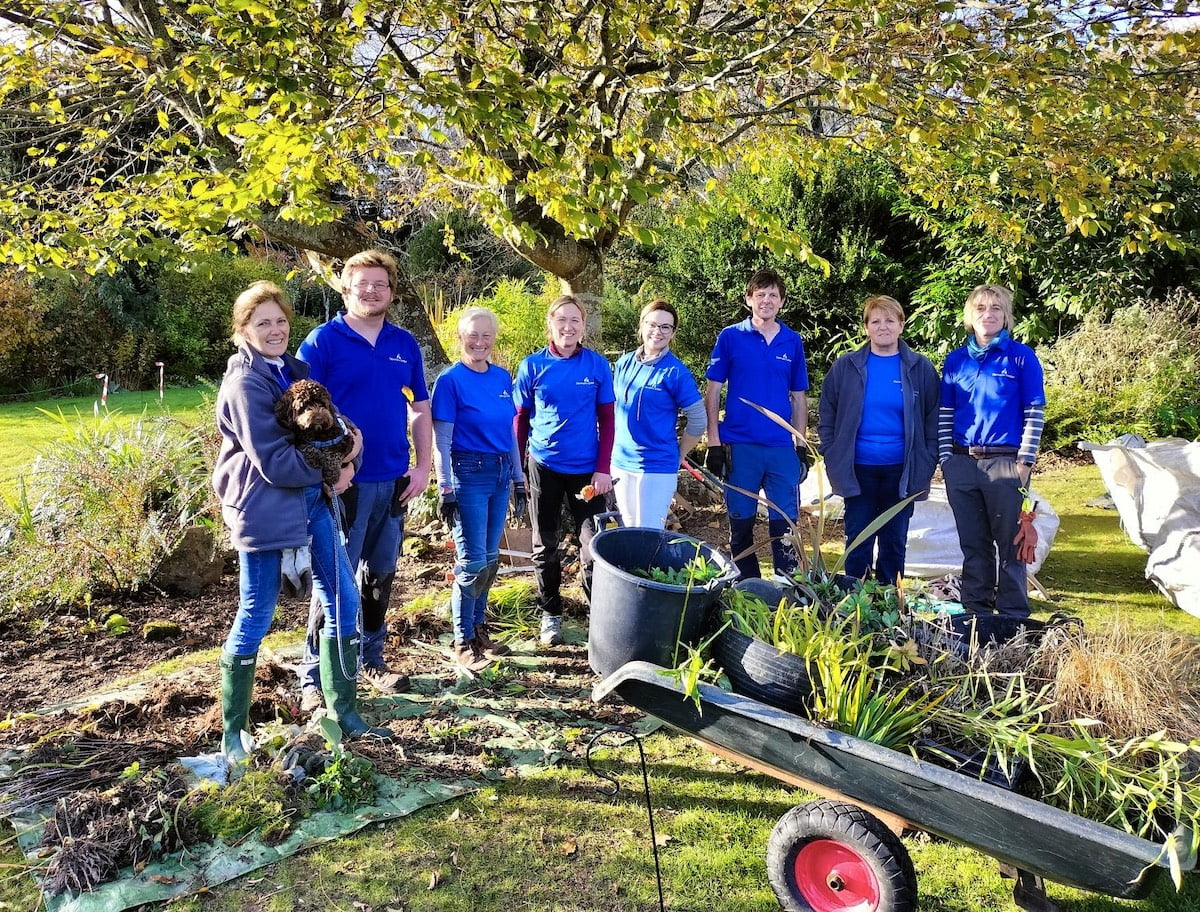
Blitzing the riverbeds with volunteers.
To achieve what we need to, I have had a drive towards increasing the numer of volunteers we have working in the Garden which has been a great success. In addition to those who were already here, we have four new volunteers – Beverley, Brigitte, Phillip, and Julie and another three in the pipeline for the coming season. At Denmans, I am a great believer that volunteers should work closely with the core team, which helps us to build a great camaraderie with them.
A new fixture on the calendar you will have read about in the newsletter are our working parties where we invite all the volunteers to work with us on a specific area of the Garden. These days, whether working on the Dry Riverbeds or by Clock House, have been a triumph and have enabled us to achieve real progress on areas where progress would otherwise have been frustratingly slow. It has also been a brilliant opportunity for everyone to work together, to see their own achievements and to feel part of the Denmans team.
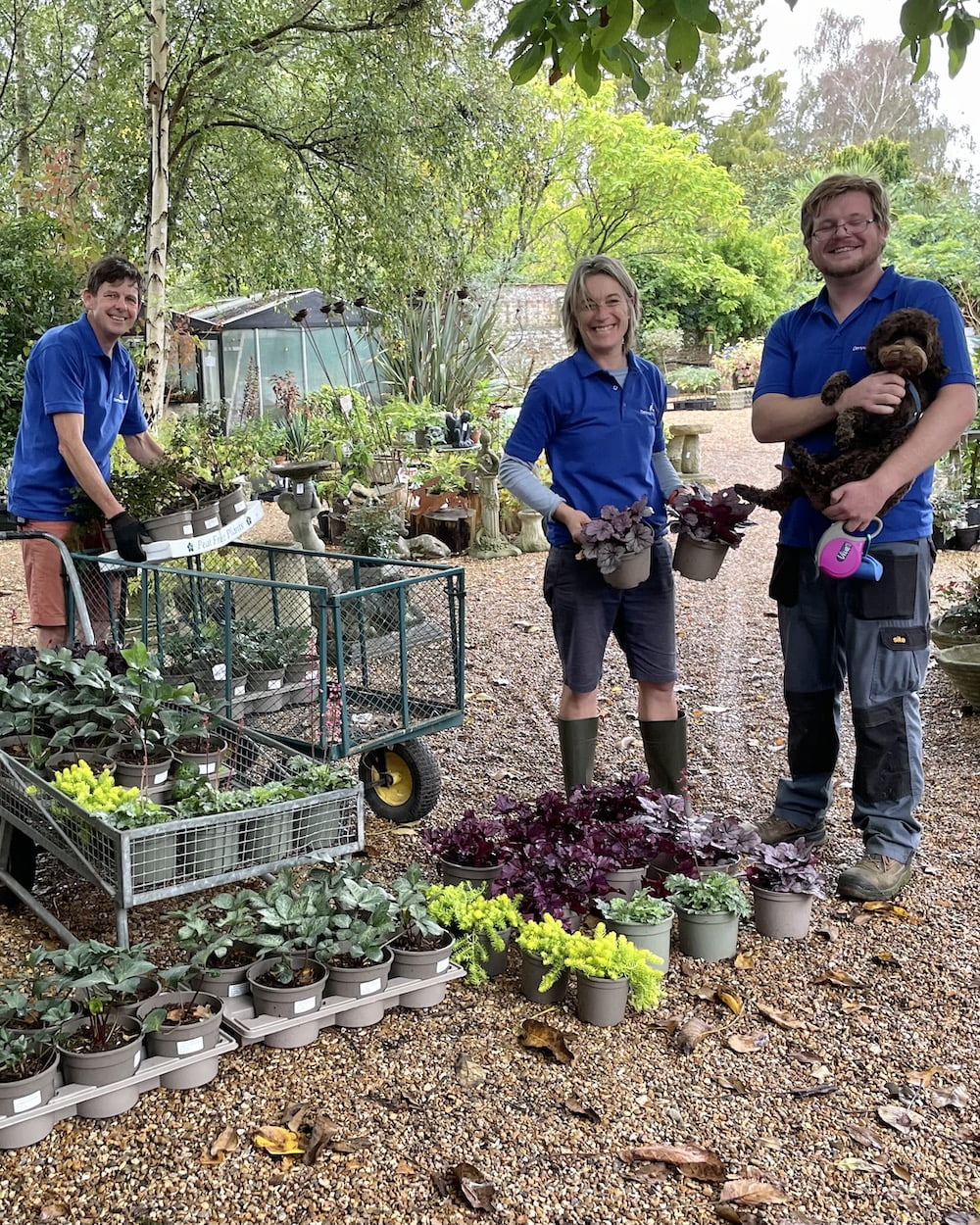
Stocking the plant centre with unusual plants.
My other main challenge since I started has been reorganising the Nursery with the brilliant assistance of Sigrid, our volunteer who is second to none in helping me do this. I think among the first things I did was to standardise the size of the pots we use and to limit the quantity of a particular plants we produce while improving the quality and selection of plants we can offer for sales from the Garden in the future. We have achieved this by ensuring that the propagation material we use is from uniform divisions and is free of any perennial weeds. In addition, I have ensured that the plants or plugs are not overpotted so we can produce plants more quickly for sale.
Is it essential that we stick to a standard horticultural method of labelling, so that similar plants do not become mixed up. The efficient use of space in our standing ground ensures the plants are all together, easy to find and helps us be more time efficient when watering.
Looking at the nursery from a sustainability point of view, we no longer use the fertilizer Osmocote to ensure there are no microplastics left behind when the fertiliser has been spent. Instead, we use a completely organic fertilizer in all the plants we grow in the nursery. As with every grower, we continue our efforts to get to grips with finding the right peat-free compost that works for us. We have recently switched suppliers to have compost that it is easier to re-wet while holding onto water and nutrients better. The peat-free compost we use for both our potting and propagation mediums contains a percentage of loam which gives it a greater buffering capacity, which I hope will work for us better in the future.
We are also gradually phasing out black pots replacing them with recyclable taupe-coloured pots. We have recently changed our labelling system to waterproof sticky labels along with a barcode to help reduce the amount of plastic used. It also gives us more traceability of our sales.
In terms of use of water in the nursery and Gardens I was lucky enough to benefit from the installation of the borehole which we fired up last spring, and which is now used throughout the site. Our long-term vision for the Garden is to have areas of the Garden we don’t water in the future and to be careful to select plants that can cope with climate change.
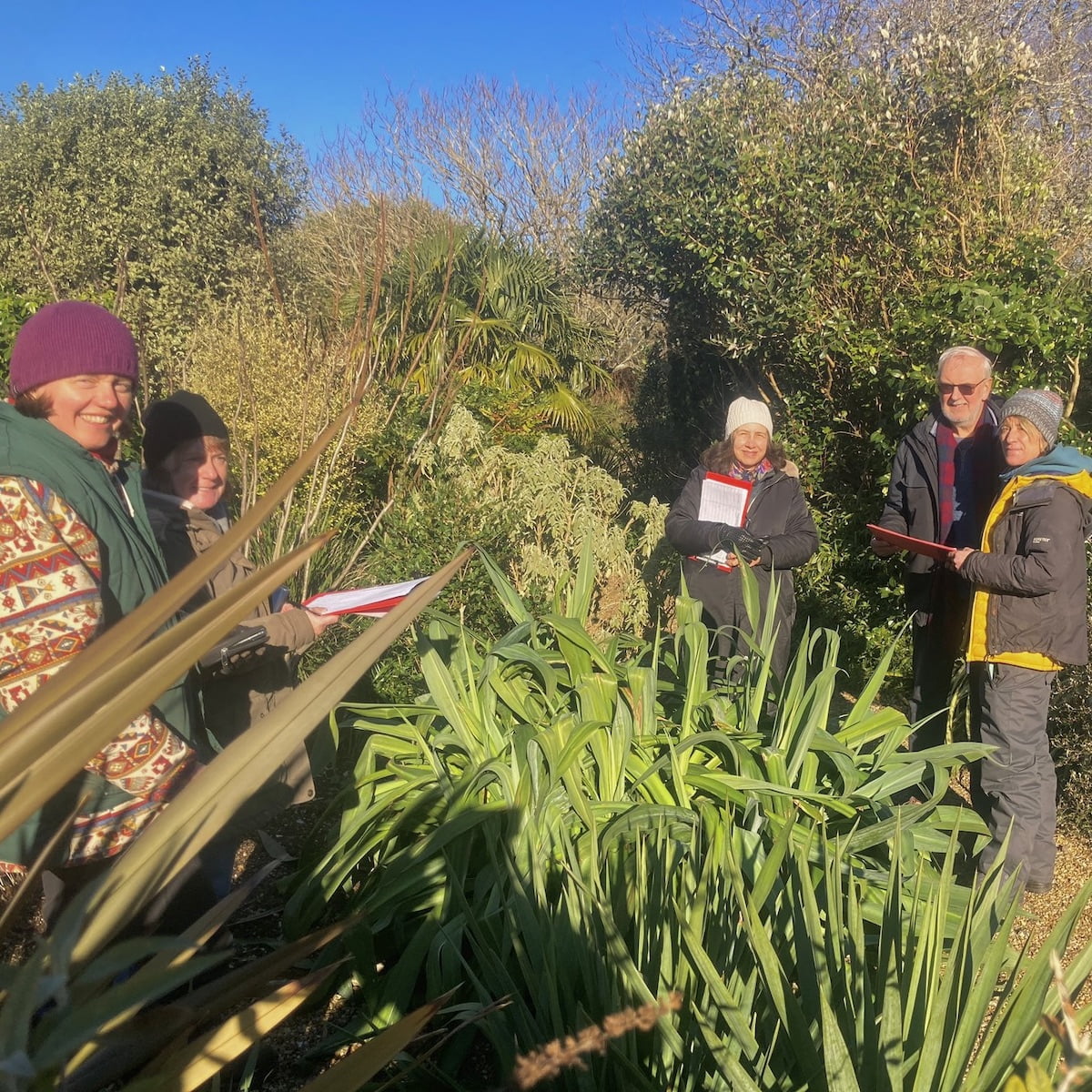
Denmans gardeners Melanie Arnold and Karen Quinn working with Persephone volunteers in the Walled Garden.
Back in the Garden, one of the things I decided early on, was that we need a method of recording all the plants at Denmans, but I was certain I was not about to start it on a spreadsheet again. Just by sheer luck there happened to be an article in the Professional Gardeners Guild journal from Plant Heritage about their database Persephone. It was perfect timing; exactly what we needed for the Garden and even better, after attending a Plant Heritage meeting at Wakehurst Place, we managed to find some willing volunteers to assist with our project. So, thanks to Clair Farrer from our local Plant Heritage Group. Persephone is the perfect solution for cataloguing the whole Garden. It enables us to categorize the plants from the different historical periods of Joyce Robinson and John Brookes as well as the planting that has succeeded them at Denmans. It is a great, user-friendly system which enables future Gardeners and volunteers to input data and photos onto the system which will be a great resource for future generations and custodians of the Garden.
Denmans is very different to my previous Gardening experiences. Even though Petworth House and Woolbeding House are historical properties, we were not really influenced by their history. I think the biggest change for me after working in the private sector is the greater interaction with everyone, the inclusivity of that process – whether it is answering plant questions asked by the general public, being involved with groups like Plant Heritage or with our volunteers, all which I absolutely love.
I feel that I have learnt a lot this year, how amazing and supportive everyone has been and the genuinely fun atmosphere. I am sure many Head Gardeners might say the same – that it is sometimes about the spirit of a Garden that slowly evolves over time and gets under your skin. In the future we will have to make some important decisions about which plants we intend to use again and which we don’t, which are unable to adapt to climate change and which are more suited.
The work has only just begun!
